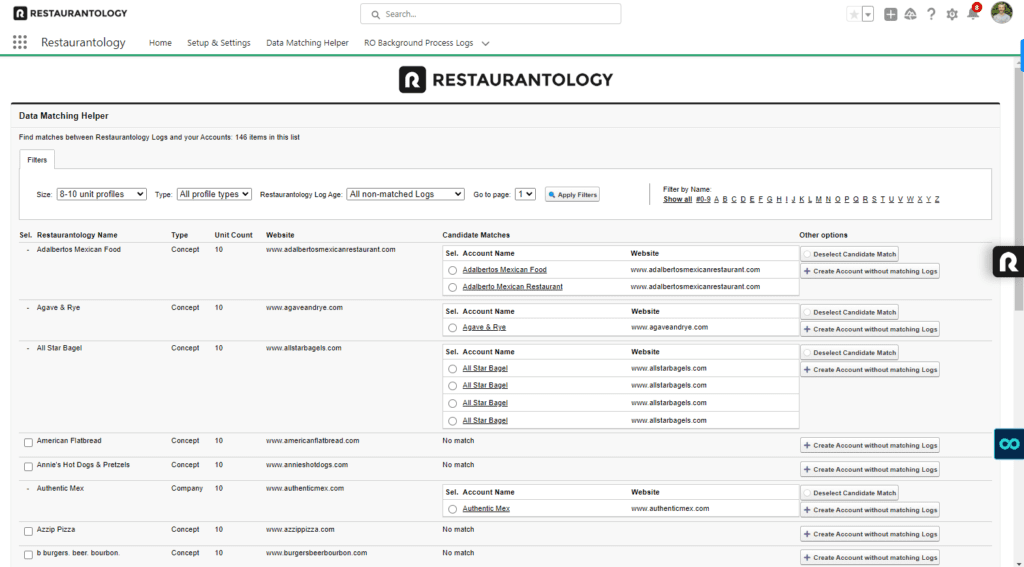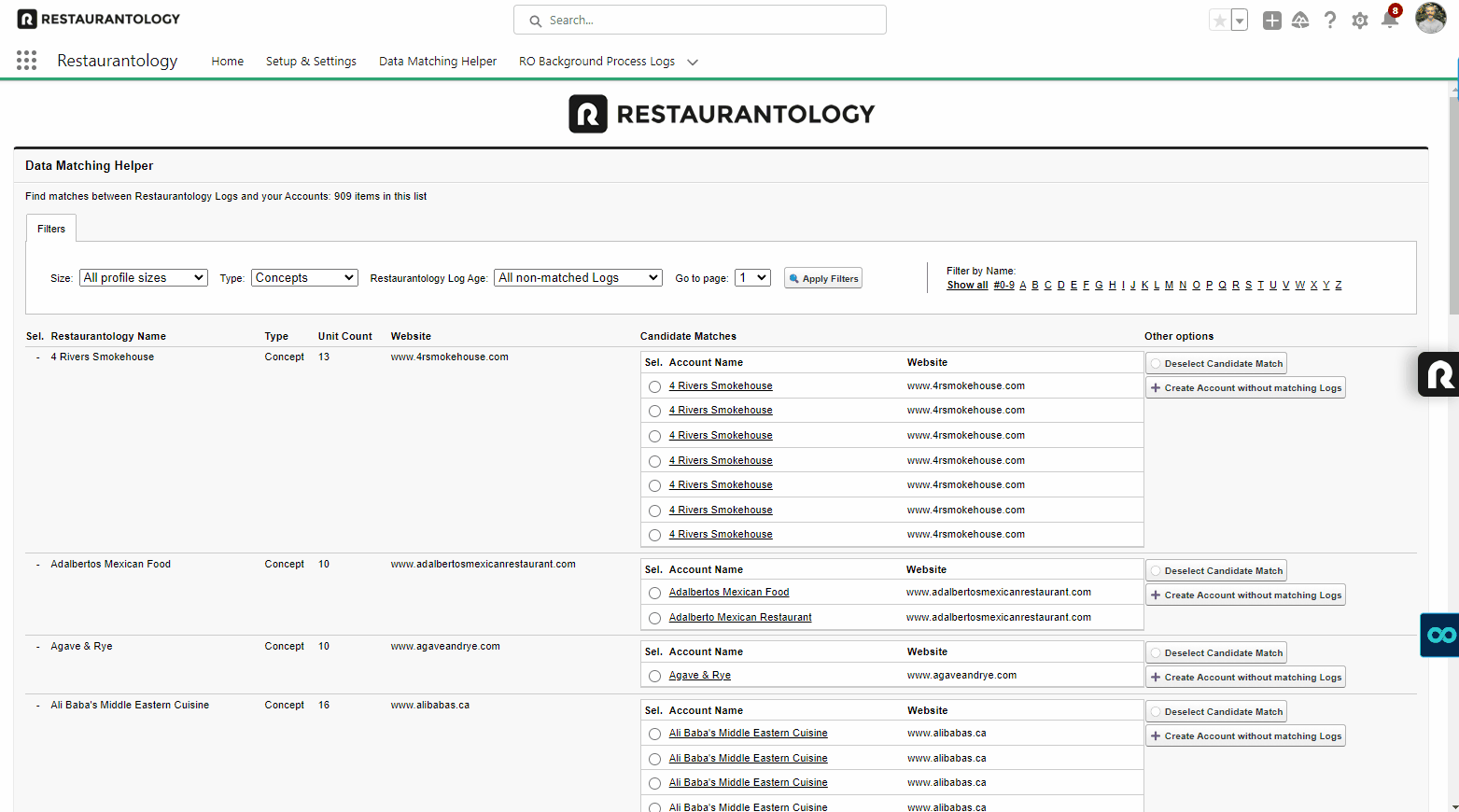Option 1: Data Matching Helper
Updated over a week ago
By far the fastest and easiest way to map incoming, yet-to-be-mapped RestaurantologyLog records to existing Salesforce Accounts is using the Data Matching Helper, which offers real-time queries that help make quick progress against large numbers of records.
The goal of the Data Matching Helper is to help admins make quick, confident decisions to either [01] map the unmatched record to an existing Account, or [02] create a new Account when no similar record exists.
The Data Matching Helper should likely be considered your primary means of connecting data during both the implementation phase of Restaurantology, as well as when reviewing ongoing additions of new data month over month.

Accessing the Data Matching Helper
The Data Matching Helper is found in the Salesforce App Center, which can be accessed by clicking the 9 dots in the upper left-hand portion of your Salesforce production instance. From the dropdown, type “Restaurantology” and choose the App.
Note: Users who intend to use the Data Matching Helper will need to ensure they have the proper access, profile, and permission to interact with the mapping tool. Users who are unable to access the App Center or who cannot match or create Account records with RestaurantologyLogs should contact their system administrator.

Using basic filters
The Data Matching Helper offers users the ability to use basic filters in an attempt to organize the resulting real-time queries into more meaningful parts:
- Size – This refers to the verified unit count of the record. We recommend you start with the largest records and work your way down.
- Record Type – This allows users to separate out concepts and companies, which will likely be assessed at different moments in time.
- Record Age – This is the fastest way to isolate any new entries versus reviewing all unmapped records.
- Letter – This allows users to jump to specific portions of the alphabet, which can be helpful in instances where large groups of data will be assessed over the course of several hours or even days.
Reviewing candidate matches
Restaurantology proposes candidate matches in instances where an existing Salesforce Account has a high similarity to an unmatched multi-unit RestaurantologyLog record. Comparisons are made using the Levenshtein distance between the Account Name and Restaurantology Name fields, as well as the Account Website and Restaurantology Website fields.
Candidate matches do not only result from exact-match fields. Users reviewing candidate matches should review each recommendation before either mapping the records or deciding to create a net-new Account.
Some RestaurantologyLog records may have multiple candidate matches, particularly in instances where similarly-named Accounts exist. We recommend users exercise caution, however you should also note that improperly matched records can always be manually mapped to a new record using the Visualforce component on the Account page layout.
Creating new Accounts
Some RestaurantologyLog records may not have a candidate match. This could result from [01] no existing Account sharing similar Name and Website data, or [02] an existing Account has data that is too different from the expected values to be recommended as a candidate match.
New Accounts can be created and instantly mapped to the unmatched RestaurantologyLogs both individually and in bulk using the “Create Account” buttons either next to each entry, or at the bottom of the page for any record(s) with the checkbox selected.
Pros and cons when using Data Matching Helper
There are several reasons why the Data Matching Helper is recommended and prioritized, however it’s important to know why certain features are not available in this particular widget.
Pros – The Data Matching Helper uses real-time queries, meaning any changes that are happening in the background—such as new accounts being added or existing Accounts being updated—are reflected in the interface.
Cons – Because real-time queries are used, it’s very easy to hit Salesforce’s governor limit, meaning after the first 2,000 results shown you are unable to interact with the data. This directly impacts the number of filters that are available in the Data Matching Helper.
Example: When working through large quantities of data, such as thousands of 2- or 3-unit records, the inability to filter the data without hitting this limit means you are often forced to resolve existing data before approaching the end of longer lists.
Lastly, there is currently no tolerance for adjusting fuzzy-match criteria, as “cleaning up” Name or Website fields would require a cache to be created or discarding records you with to no longer review (see Scan and Match Data).

